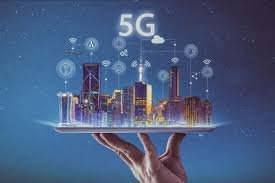How Fifth-Generation Networks Are Transforming Connectivity and Applications in 2024

1. Introduction to 5G Technology
The advent of 5G technology represents a monumental leap forward from its predecessor, 4G. With its promise of ultra-fast speeds, low latency, and massive connectivity, 5G is set to transform various aspects of connectivity and application development in 2024. Unlike 4G, which primarily focused on improving mobile internet speeds, 5G offers a broader range of capabilities that will impact industries, businesses, and daily life.
Key Features of 5G: The primary features of 5G include enhanced data speeds reaching up to 10 Gbps, ultra-low latency of just 1 millisecond, and the ability to connect up to 1 million devices per square kilometer. These improvements will support new technologies and applications that demand high-speed data and low-latency responses.
2. Transforming Connectivity and Communication
Enhanced Mobile Experience: 5G networks significantly enhance the mobile internet experience by offering faster download and upload speeds. For users, this means smoother streaming of high-definition content, quicker downloads, and more reliable connections during peak usage times. Services like Netflix and YouTube are leveraging 5G to offer ultra-high-definition (UHD) and 4K content, providing a richer media experience.
Smart Cities and IoT Integration: 5G is a critical enabler for the development of smart cities. Its high-speed, low-latency capabilities support the extensive deployment of Internet of Things (IoT) devices used in urban infrastructure. This includes smart traffic management systems, intelligent street lighting, and real-time environmental monitoring. For instance, Barcelona and Singapore are leading the way in integrating 5G to enhance city services and operational efficiency.
Telemedicine and Remote Work: The healthcare sector benefits significantly from 5G through improved telemedicine services. High-resolution video consultations, remote surgery, and real-time patient monitoring are now feasible thanks to 5G’s low latency and high bandwidth. Similarly, remote work applications will become more effective, with seamless video conferencing, collaborative tools, and remote desktop applications becoming more efficient and reliable.
3. New Applications and Innovations
Augmented Reality (AR) and Virtual Reality (VR): 5G is set to revolutionize AR and VR experiences by providing the necessary bandwidth and responsiveness required for immersive applications. AR and VR technologies, used in gaming, education, and training, will see enhanced interactivity and realism. For example, Oculus and HTC Vive are expected to leverage 5G to deliver more immersive virtual environments and interactive experiences.
Autonomous Vehicles: The development and deployment of autonomous vehicles are heavily reliant on 5G technology. The ultra-low latency and high data rates of 5G networks support the real-time communication required between vehicles, infrastructure, and cloud-based data centers. Companies like Waymo and Tesla are incorporating 5G to enhance vehicle-to-everything (V2X) communication, improving safety and efficiency on the roads.
Smart Manufacturing and Industry 4.0: 5G will play a pivotal role in advancing smart manufacturing and Industry 4.0. Real-time data collection, high-speed analytics, and automation of manufacturing processes are facilitated by 5G. This technology enables factories to implement advanced robotics, predictive maintenance, and improved supply chain management, leading to increased productivity and reduced downtime.
4. Challenges and Future Outlook
Network Infrastructure and Deployment: Despite its potential, the rollout of 5G faces challenges related to infrastructure and deployment. Building the necessary network infrastructure, including small cells and fiber-optic cables, requires significant investment and time. Moreover, the deployment of 5G infrastructure must address regulatory, safety, and environmental concerns.
Security and Privacy Concerns: The increased connectivity and data transmission capabilities of 5G introduce new security and privacy risks. Ensuring robust cybersecurity measures and protecting user data from potential breaches are crucial for maintaining trust in 5G networks. Governments and companies must collaborate to develop and implement comprehensive security protocols.
Global Adoption and Equity: While 5G technology promises numerous benefits, its adoption varies globally. Developed countries are leading the deployment of 5G networks, while developing regions may face challenges related to cost and infrastructure. Addressing these disparities and ensuring equitable access to 5G technology will be essential for maximizing its global impact.
In conclusion, the rise of 5G technology in 2024 is transforming connectivity and applications across various sectors. Its enhanced speed, low latency, and massive connectivity capabilities are driving innovations in mobile experiences, smart cities, telemedicine, and more. As the technology continues to evolve, addressing infrastructure, security, and equity challenges will be key to unlocking its full potential.







